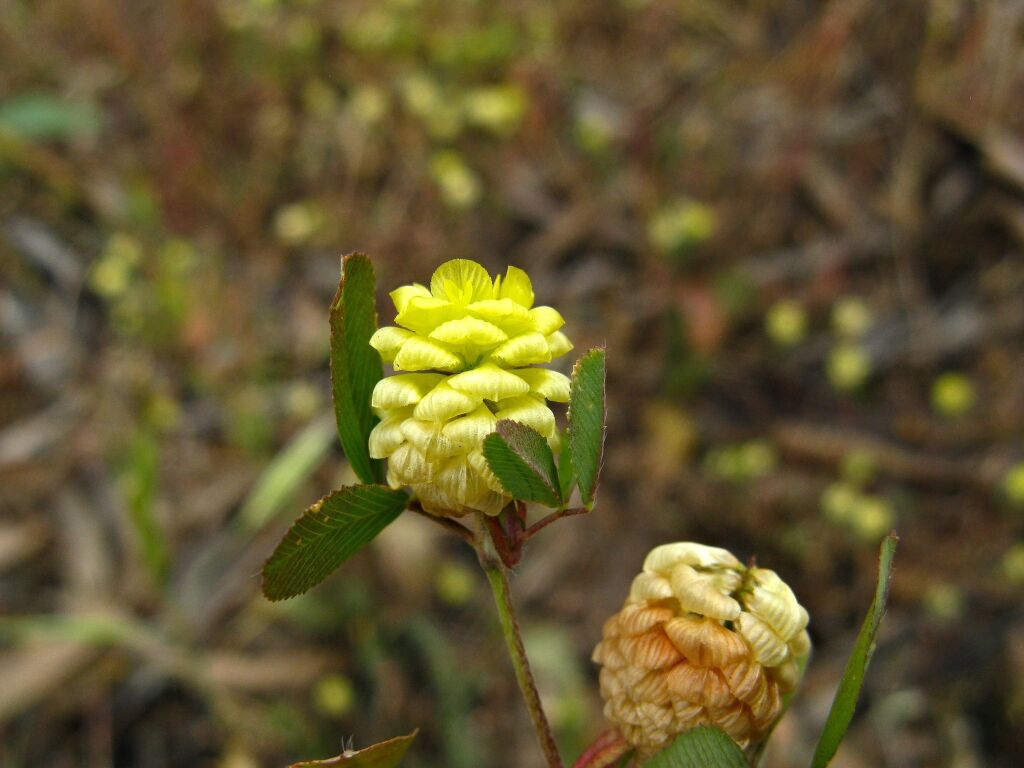Trifolium campestre var. campestre
Hop CloverProstrate, ascending to erect annual herb; stems 5–50 cm long, simple or branching, sparsely hairy to glabrescent. Leaves pinnately trifoliolate, petiolate; leaflets rhombic to oblong-elliptic, 8–16 mm long, 4–8 mm wide, virtually glabrous, finely toothed, apex truncate or retuse; stipules leafy, adnate to petioles for about half their length. Inflorescence many-flowered, axillary, globose, 8–15 mm long, 7–10 mm wide, pedunculate; flowers subsessile. Calyx to c. 3 mm long, white, more or less glabrous, tube campanulate, 5-veined, throat open, teeth unequal, spiny, erect or spreading in fruit, lower 3 teeth at least twice as long as tube, upper teeth very short; corolla 4–6 mm long, yellow, persistent; standard spoon-shaped in fruit, hooded, margin minutely dentate. Pod obloid, 1–2 mm long, included in calyx tube; seed 1, ovoid, c. 1 mm long, yellow. Flowers mainly Sep.–Jan.
LoM, MuM, Wim, GleP, Brid, VVP, VRiv, MuF, GipP, OtP, WaP, Gold, CVU, GGr, DunT, NIS, EGL, EGU, WPro, HSF, HNF, OtR, Strz, MonT, HFE, VAlp. A common and well-established weed throughout much of Victoria.
Zohary & Heller (1984) recognize 3 varieties but apparently only the type variety occurs in Victoria. The others differ mainly in the length of the peduncles and flower and leaf colour.
Jeanes, J.A. (1996). Fabaceae. In: Walsh, N.G.; Entwisle, T.J., Flora of Victoria Vol. 3, Dicotyledons Winteraceae to Myrtaceae, pp. 663–829. Inkata Press, Melbourne.
 Spinning
SpinningZohary M.; Heller, D. (1984). The genus Trifolium. Israel Academy of Sciences and Humanities, Jerusalem.
